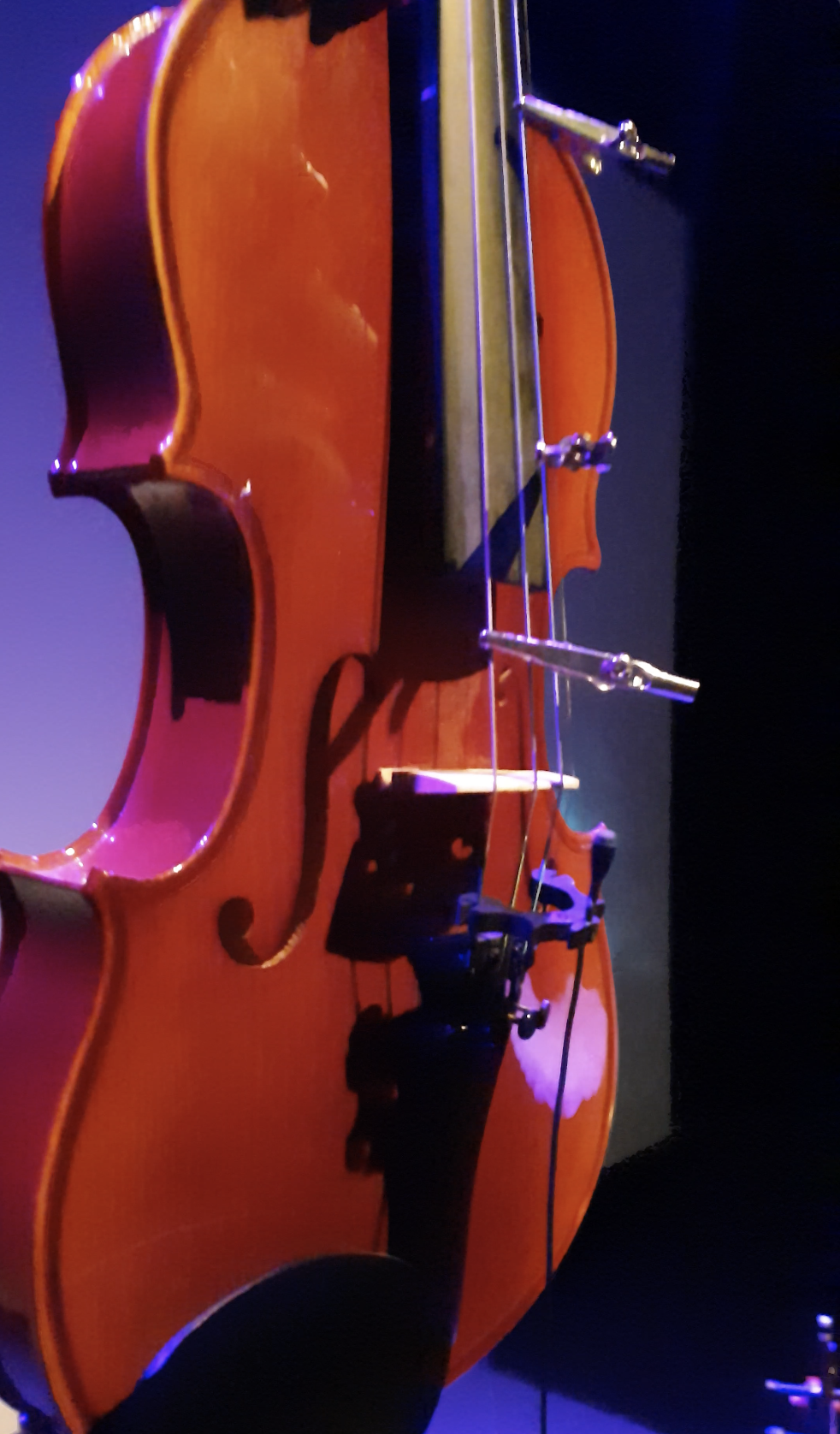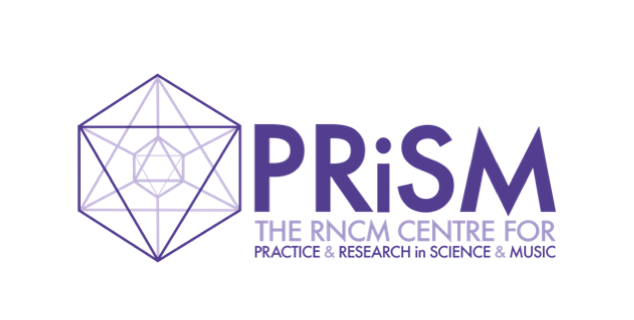The Raft Breaks
The Raft Breaks
By Sam Salem
8 May 2020
“It begins with a single exhalation and ends in the midst of an uncanny, slow, violent storm.”
The Raft Breaks is a work for solo violin, live electronics, tape and video, composed by PRiSM Lecturer in Composition, Sam Salem, in collaboration with prominent new music violinist Linda Jankowska, between 2017 and 2019.
The Raft Breaks is representative of my aesthetic interests: as the PRiSM Lecturer in Composition, my work is both highly interdisciplinary and concerned with many aspects of technology and experience, not least the technological mediation that takes place between performer, electronics and audience during a live performance. This blog is intended to provide context to the work, and consists of an edited conversation with Linda and an overview of the technical realisation of the work. I hope that it gives some insight into my thinking and method.
Read on for a Q&A between Sam and Linda, followed by Sam’s technical set-up. Watch the full performance here. For more of Sam’s work visit his website www.osamahsalem.co.uk.
What follows is a transcript of a public conversation between Sam and Linda, preceding the performance of The Raft Breaks at the MANTIS Festival at University of Manchester in February 2020.
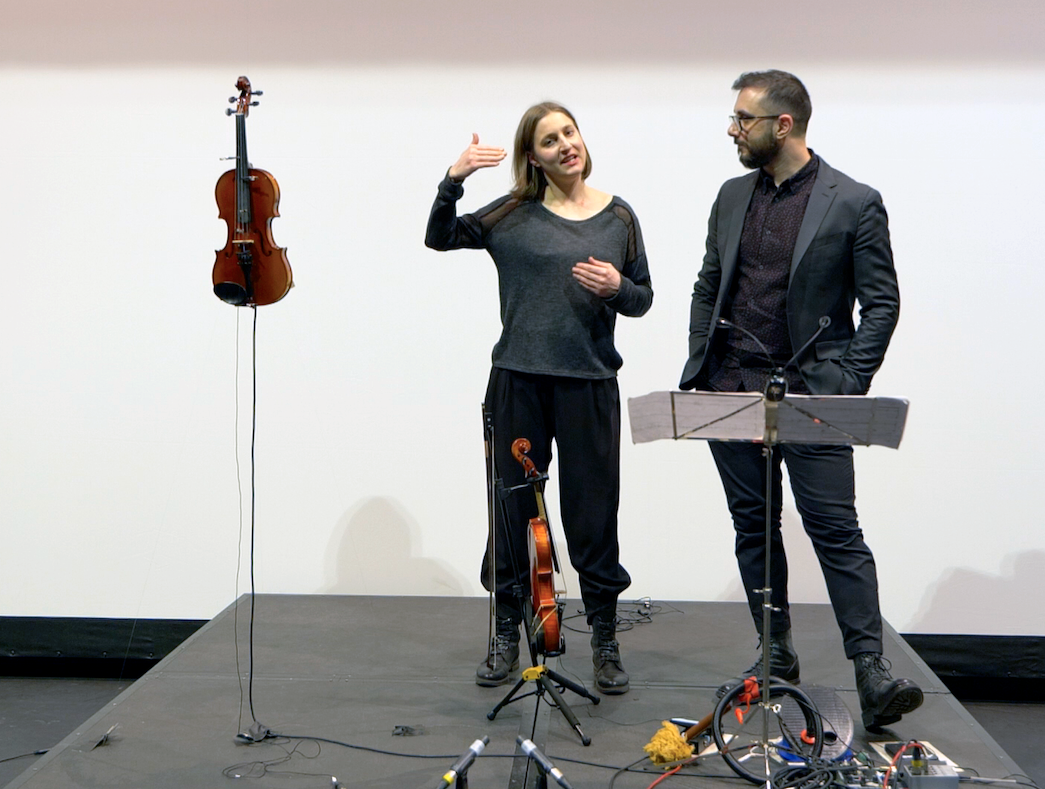
PRiSM’s Sam Salem in conversation with violinist Linda Jankowska about The Raft Breaks during the recording session at the RNCM.
S: We started The Raft Breaks in 2017 and as I knew the piece was going to be written for Linda, I also knew that I wanted to go to where she is from. Place is a huge focus of my work, and I always travel to locations linked to my themes to film and record material. So we went to Poznan in Poland. And we gathered a lot of material, but it wasn’t clear at that point what the piece was going to be. Over time, it became clearer and clearer that there were several competing threads.
One was somewhat political. The title of the piece, The Raft Breaks, references one of the poems of Ezra Pound, written while he was imprisoned at the end of the Second World War for broadcasting propaganda for the fascists. He wrote that “the raft broke and the waters went over me”.
As a poetic image, it is very powerful and it resonated with me quite deeply. But, given the source, it is also rather problematic. It is true that Pound held abhorrent views, and also true that without Pound there would be no literary Modernism as we understand it today.
I did consider for some time about whether to include this text in the piece (fragments of the poem also form the basis for the sung text in the first movement). I felt that using this text gave me a way of acknowledging the increasingly dire political situation in Poland and elsewhere in Europe.
So that was one thread! The pitched material for the piece came from church services that we recorded…
L: Because of the very complicated relationship with the Catholic Church… we went to a few masses, we recorded organs…
S: And the last thread was concerned with environmental destruction, in a very local, personal sense. One of the things that we filmed was a forest near where Linda’s family owned a cottage…
L: This was in July 2017. And then in August, a month later, a hurricane that was 120 kilometres an hour, which is very unusual for that part of the world, cut right through the village where we had the house and in the space of 5 hours destroyed everything. So it was an anomaly for that geographic location that was a direct result of climate change, or climate crisis as it’s called now.
And then my parents had to cut down everything. So basically now there is a bare field which will make it even more difficult for the community to defend itself from other natural disasters if they come. So it was a powerful event and a multi-layered representation of cultural and global problems.
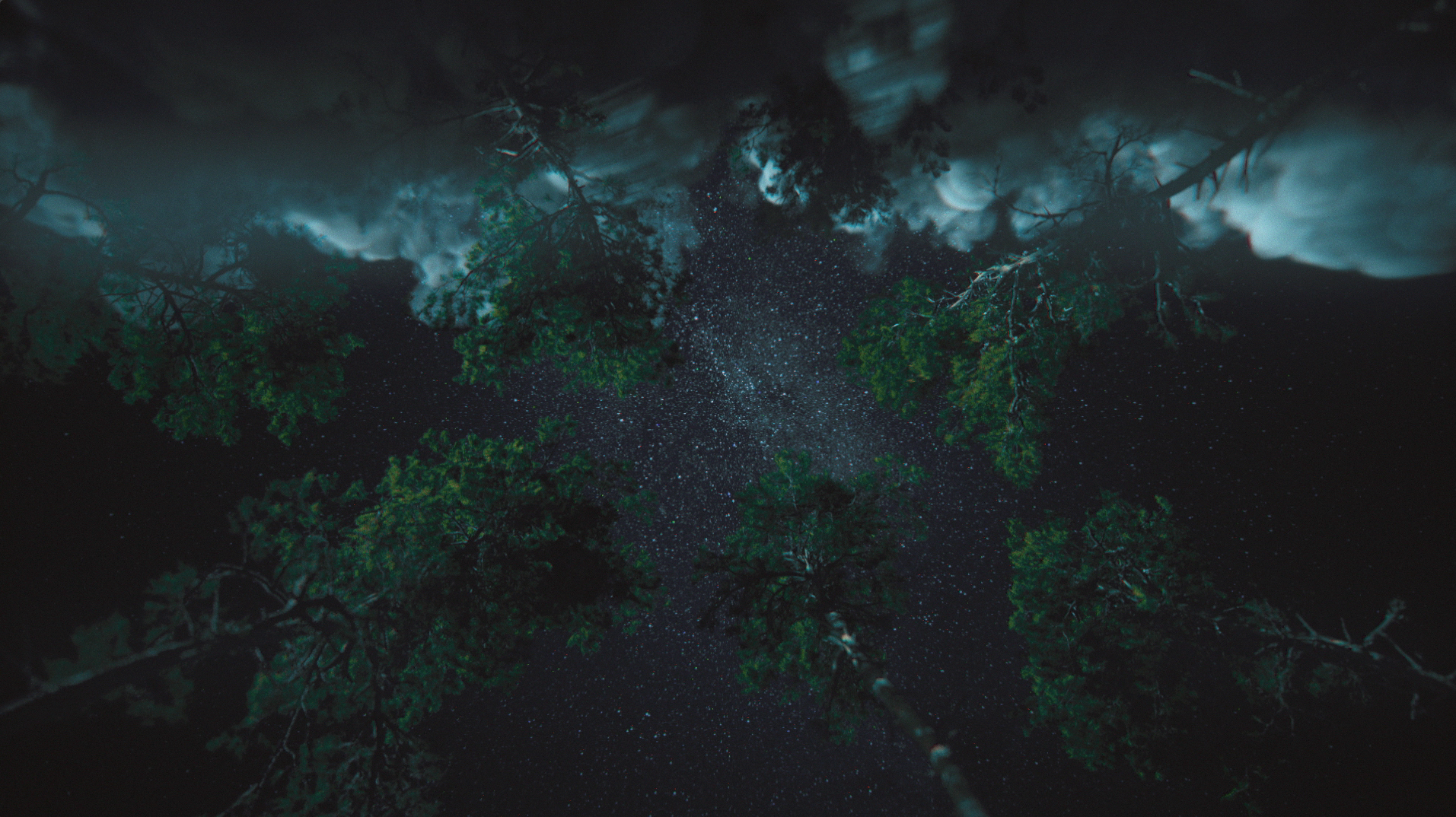
A still from the digital recreation of the forest on the evening of the storm. From The Raft Breaks Copyright Sam Salem
S: There are only two pieces of video in the piece. The first is of the forest, as it was, shot on a beautiful summer’s day. And the second shot is a digital recreation of the forest on the evening of the storm, which took about 6 months to make. It’s a very simple idea, but very hard to realise because I wanted the second shot to look uncanny. Uncanniness is really central to my work, in the sense of something feeling unsettling as it is both strange and familiar simultaneously. I hope that sense of uncanniness is clear in the final piece.
With regards to the setup of the piece, because it is a solo piece for violin and electronics, the standard practice is to have all of the electronic sound projected via the speakers so that the piece is essentially a dialogue between the real performer / instrument and a disembodied, computer-mediated voice, projected into the space.
But I wanted more of a dialogue between two embodied voices. So alongside Linda, there is another violin hanging in the space which acts as the physical embodiment of the digital aspect of the work. A lot of the sound that you’ll hear that is electronic comes from this real object: the electronic sound resonates through the hanging violin and interacts with its preparations in an interesting way.
Question from the audience: What sounds are you using?
L: Sam is, by trade, an electroacoustic composer and we walked a lot around the city and we went also to the countryside. And then Sam spent a long time in the studio analysing the recordings, deciding upon the pitch content and creating the tape part for the piece and then building the whole spectrum of the work from the field-recordings that we made.
When I practice the piece, I can detect where the sounds come from, which part of our excursion. When I play, it is very much like a trip back home. Because I was showing Sam the sights, and telling him the stories about the sights, we could go through this psychogeographic process together. And after the trip he told me “Now I understand you a little bit better”. I don’t know that it was a compliment…
S: [Laughter]. Ok, I have a question for you. As a performer, how do you navigate the boundary between acoustic and technological sound making? How do you resist becoming subsumed by technology and setups, and all of the things on stage that are not you?
L: I was thinking a little bit about the privilege of accessing technology.
The biggest problem of working with anything electronic is being able to hear the sounds that you are making, and for that one has to have the opportunity to work in a manner where one has a stage, the setup for the piece, loudspeakers and everything that is required.
I am quite lucky because we are part of Distractfold Ensemble and in my flat in Huddersfield we store our equipment. I am also a PhD student at the University of Huddersfield, which also makes it easier for me to access infrastructure, such as rooms and equipment, if I need it.
But before we had all of the gear at hand, I played other pieces with electronics and it was incredibly difficult because I didn’t have access to these things, so I couldn’t really practice at a level where I was fully engaged with the production of sound. So I couldn’t really listen to the sounds that I was making. Sometimes it is still difficult to get that symbiotic relationship. Can I really practice in a way that gives me full agency over the production of sound.
Question from the audience: What I understood is that you felt this terrible loss, with all the trees gone. Do you think that by Sam recreating this virtually somehow, by putting this in the context of your performance space, do you feel some sense of healing?
L: Sam gave me a great gift because he wrote a very personal piece, which is about my life. And when I practice, it’s not like reading a diary but it is an emotional experience. But he did one other thing, he incorporated at the end of the 1st movement the sound of the forest. So when I hear it projected into the space, it’s as if I was a child running in the forest.
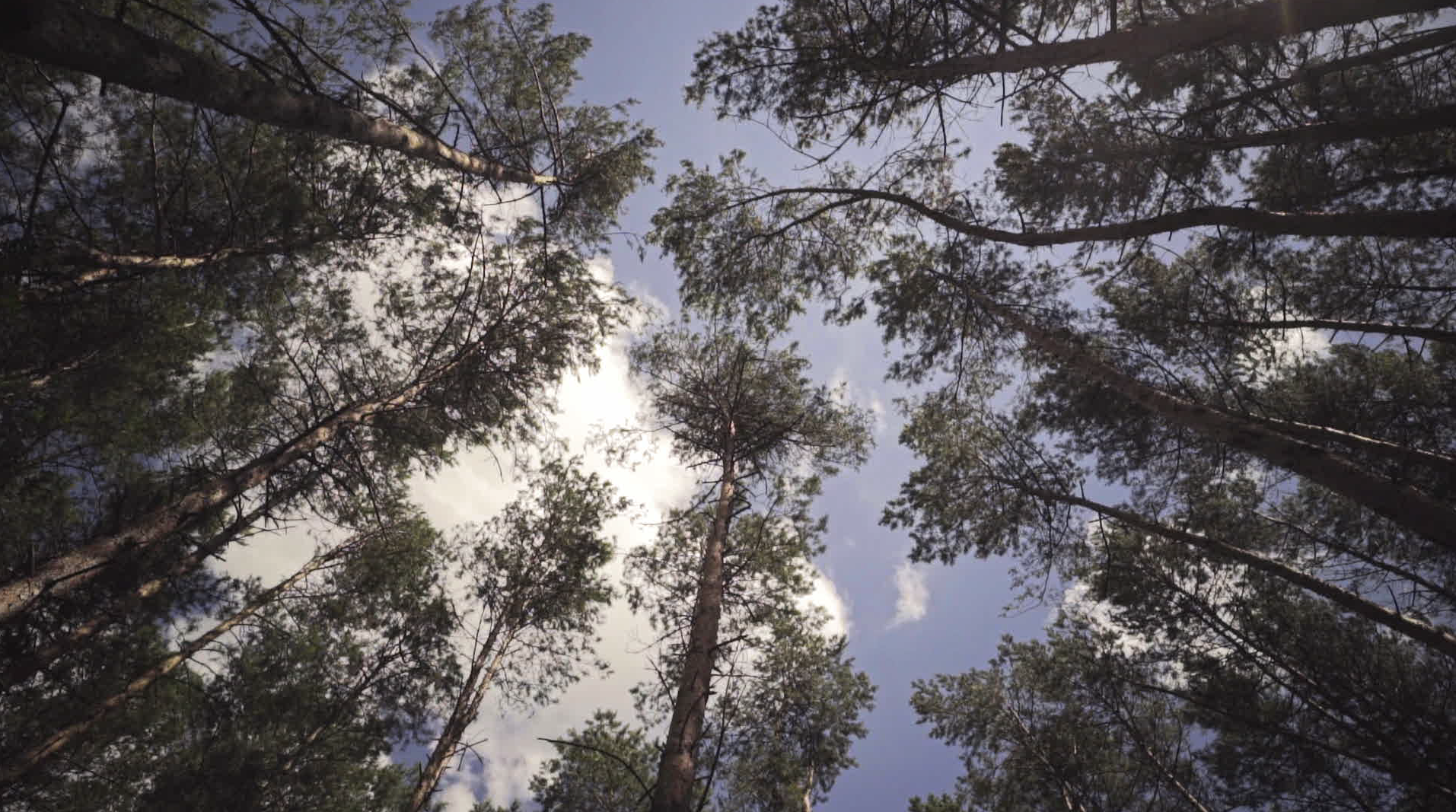
A still from the video of the forest, shot on a beautiful summer’s day. From The Raft Breaks, Copyright Sam Salem PRiSM.
The Raft Breaks: Technical Setup & Overview
As The Raft Breaks is my first solo work, it gave me cause to re-evaluate some of the assumptions that have underpinned my work. First of all, I decided that there would be no click track, in contrast to my mixed music up to this point. This decision was made partly as an experiment: would removing an absolute time-base allow this piece to breathe or cause it to crumble?
I explored a number of options and, in the end, this piece makes use of QLab, a piece of software more often used in theatre productions than in composition. The beauty of QLab is that it allows for nested cues, which provide a great deal of temporal flexibility, e.g. I was able to create several fermata cues, meaning that Linda could take control of the flow of time at certain moments of the piece, while others remained tightly composed.
Secondly, the video part for this piece consists of only 2 shots. The “real” forest, and an “unreal”, dreamlike version. It is therefore fitting that alongside Linda, there is another violin hanging in the space, which acts as the embodiment of the “unreal” voice in the piece. So, perhaps it is more true to say that this piece is a duet!
As with my other mixed work, the performer is responsible for all sound making: she performs the electronics and triggers the tape and video herself, there is no intervention from the front of house.
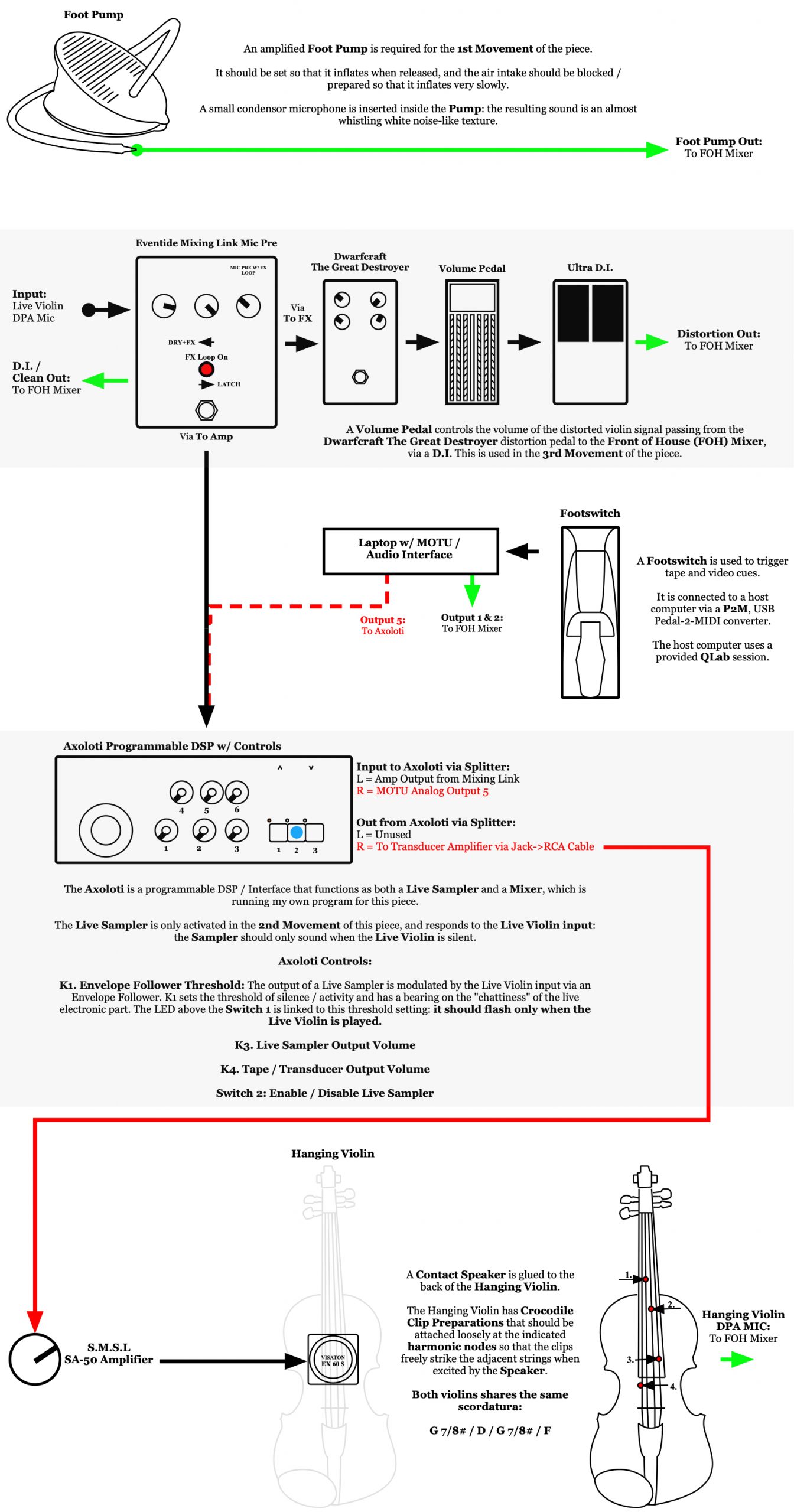
Technical set up for The Raft Breaks by Sam Salem.


